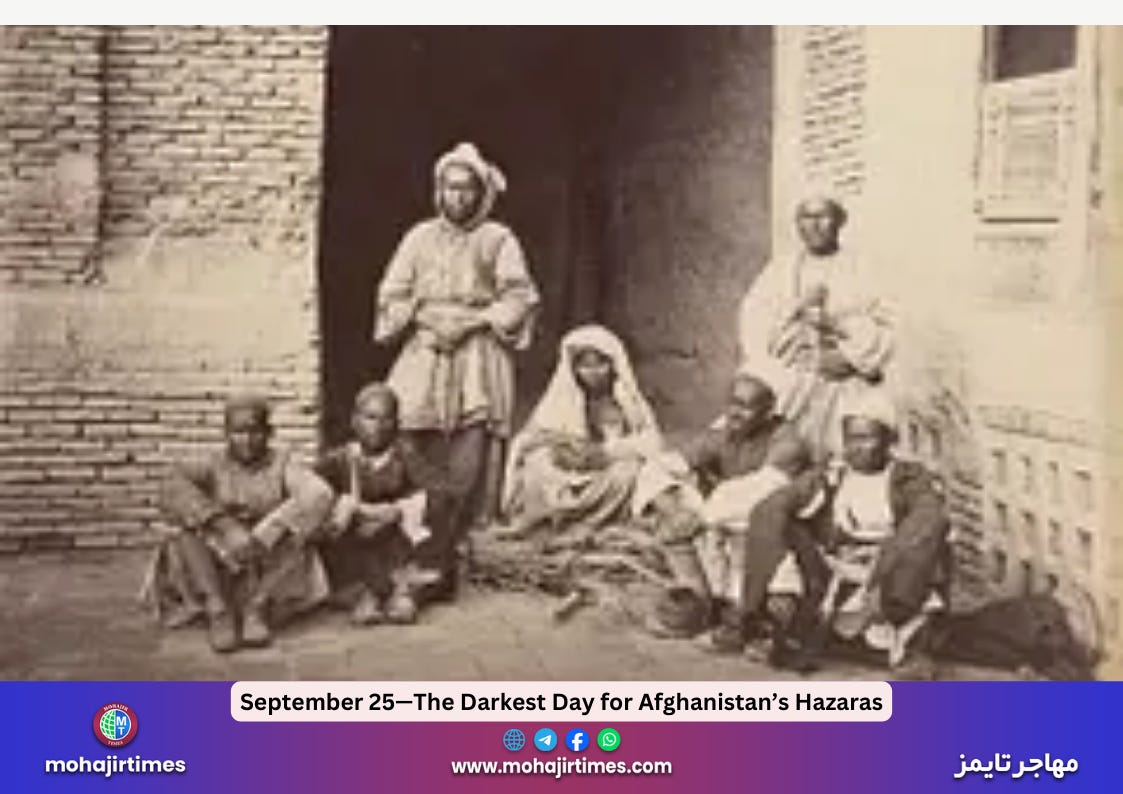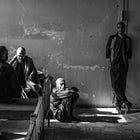September 25—The Darkest Day for Afghanistan’s Hazaras
Abdul Ali Mazari took the Hazara identity out of the realm of criminality and gave a new identity to the descendants of Uruzgan’s victims
By: Nader Sirat
September 25 marks the massacre of the Hazaras in Uruzgan. On this day in 1892, the ghost-like army of Abdul Rahman crushed the last resistance of the Hazaras in Uruzgan, leaving behind a devastated and blood-soaked land.
This date has been a painful and agonizing reminder for all Hazaras. Each year, as this date repeats, it feels as though another Uruzgan is destroyed in one’s imagination. The image of Abdul Qudoos with his bloodthirsty warriors, armed to the teeth, attacking Uruzgan and killing everyone in their path fills the mind. They shot many men and left behind a legacy of black history.
Every year, when this day is remembered, and Uruzgan is mentioned, it becomes evident that Uruzgan still carries its burden of pain. The cries of Hazara children echo through its walls, and the final image of their helplessness emerges from the pages of history. The army of Amir Abdul Rahman, like specters and cannibalistic monsters, brought forth this catastrophe. These monsters devoured everything and never allowed anyone to live peacefully or create a plan for a peaceful life. Tragically, they even dehumanized the Hazaras of that time.
This day represents the peak of darkness for the Hazaras. Before the invasion of Uruzgan and other Hazara regions, they were already seen as cursed and outcast figures in the history of Islam. However, Abdul Rahman’s campaign was the final reckoning, aimed at eradicating the “infidels” in the worst way imaginable. Countless lives were sacrificed, and numerous creators were cut down by the sword of Abdul Rahman’s army. Beyond this brutality, other inhumane acts were inflicted upon the people of Uruzgan, making it the greatest tragedy in Hazara history.
When speaking of such a day, the image of Hazara girls, women, and children from Uruzgan comes to mind. The whole meaning of the Hazara people’s alienation in history becomes apparent. We understand the suffering they have endured throughout the ups and downs of this sorrowful land, from the confiscation of their lands to the violation and looting of their properties, both internally and externally displaced. All of this has been a source of pain for the Hazaras. Yet, despite everything, the Hazaras pulled themselves out of the swamp of destruction, stood strong on the battlefield against their political and social rivals, and demanded their rights. Particularly in the 1990s, a new chapter emerged for the Hazaras as they found their political direction.
On the day of Abdul Rahman’s invasion and his call for Hazara opponents to rise against them, the collective and political life of the Hazaras across all parts of Afghanistan, especially in Uruzgan, came to an end. Uruzgan no longer remained, and all became victims of a mad king’s invasion. It took years for the political fragmentation of the Hazaras to reassemble and take shape. The arrival of Abdul Ali Mazari, the most justice-seeking figure in a century after this tragedy, gave essential form and profound impact on the political and social life of the Hazaras.
Abdul Ali Mazari took the Hazara identity out of the realm of criminality and gave a new identity to the descendants of Uruzgan’s victims. However, despite all the efforts made by Mazari to restore Hazara's identity, the story of Uruzgan’s days remains incredibly painful and unimaginable. This is why September 25 is remembered as the darkest day for the Hazaras in Afghanistan.









